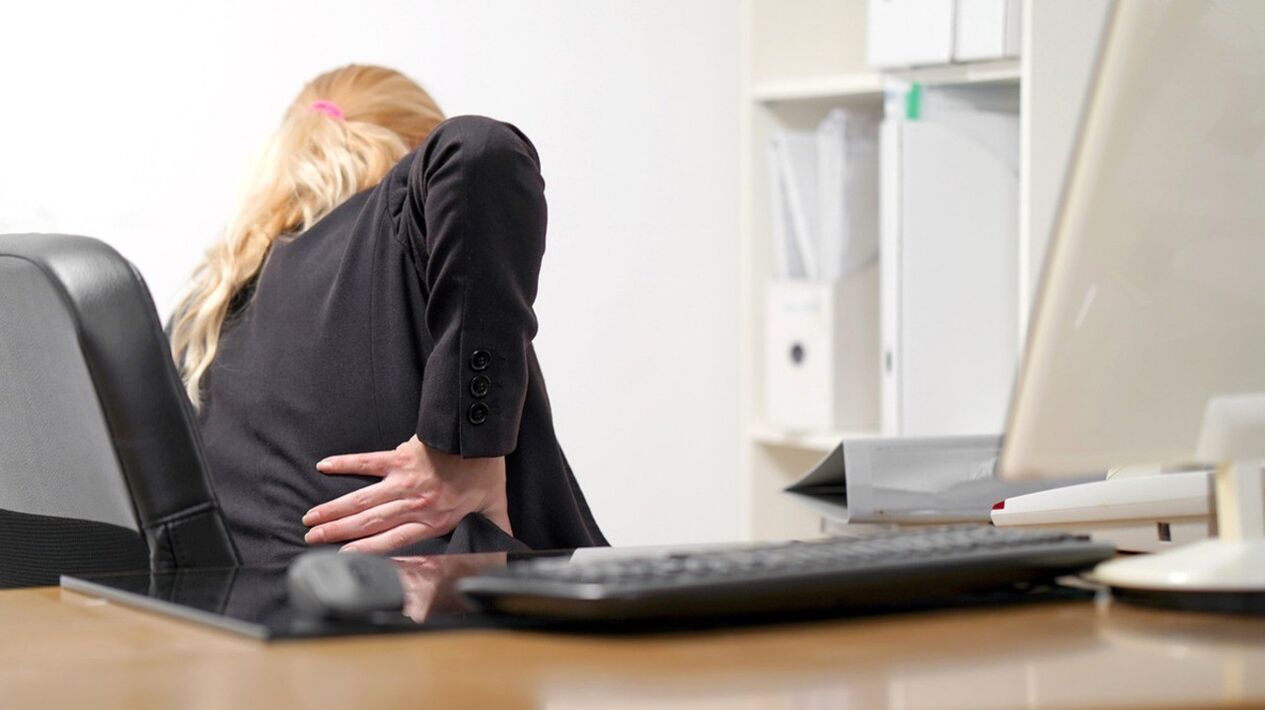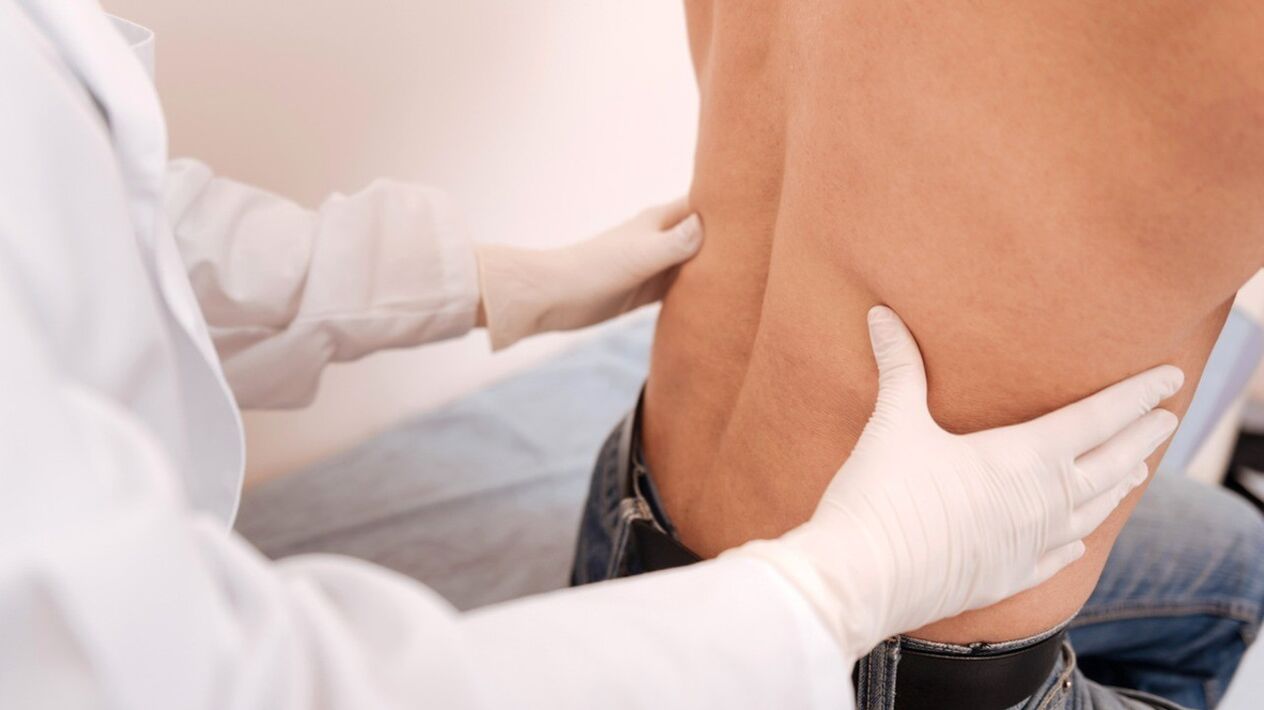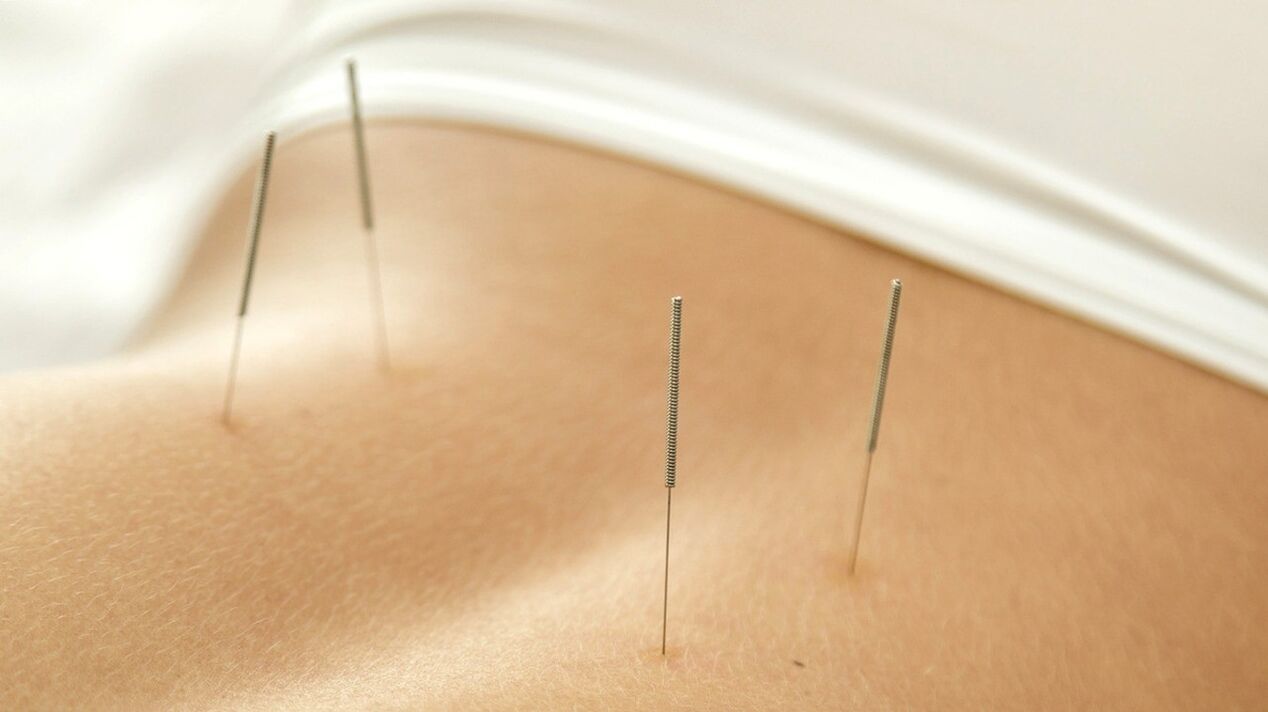
There are many diseases that manifest themselves as painful sensations in the lumbar region. They can indicate problems with the spine, joints, muscles and internal organs - kidneys, intestines, liver. This is a rather insidious symptom, and without visiting a doctor it is impossible to determine the true cause of pain in the lumbar region. Correct treatment is possible only after diagnosis in a medical facility.
Types of pain
During the initial examination, the doctor must ask the patient about the type of pain. In duration they can be:
- sharp- occur suddenly, paroxysmally, vary in severity and last less than a month;
- subacute- last 2-3 months, most often they recur: they become active for 2-5 days, then subside and return after a while;
- chronic- Lasts longer than 1 year, the course is usually recurring.
Doctors have found that chronic pain in this area is most often accompanied by the formation of local muscle spasms, compactions that have specific pain points (the so-called myofascial syndrome). The process also affects the muscles that straighten the spine, the gluteal muscles, the pelvic ligaments and the sacroiliac joint.
The nature of the pain is sharp, aching and dull. By intensity - strong, medium, weak. Depending on the location of pain, the following types are distinguished:
- Lumbodynia- pain in the lumbar or lumbosacral area;
- sciatica- in the lower back, radiating to the leg;
- Sacralgia- in the area of the sacrum;
- Coccydynia- in the coccyx.
5 facts about lower back pain
- Approximately 25% of all clinic visits with complaints of back pain are related to sensations in the lumbar region.
- According to research, 84% of people have experienced lumbar pain at least once in their lives.
- 44–78% of patients (depending on age and region of residence) experience repeated attacks of lumbodynia.
- Up to 37% of people regularly lose their ability to work due to back pain.
- In 85% of patients who consult a doctor for pain in the lumbar region, diseases of the musculoskeletal system are detected, which become the cause of pain.
- According to statistics, about 90% of patients with acute pain in the lumbosacral region recover within 2 weeks.
Causes of lower back pain
Disorder of the musculoskeletal system
In 2006, the European Federation of Neurological Societies officially adopted the following classification of causes of low back pain. They are divided into 3 main groups:
- Compression of the spinal root, peripheral nerve in the lumbar spine. It is caused by bulging (degenerative changes) in the intervertebral discs. Less commonly due to dysplasia (disorders in the formation process) of the upper articular processes of the sacrum.
- Diseases of the spine caused by tumors, joint damage, infections, compression fractures, allergic reactions, autoimmune inflammatory processes.
- Diseases of the musculoskeletal system as a result of subluxation, sprain of the spinal ligaments, muscle strain, dysfunction of the intervertebral joints.
Pathologies of internal organs
- Disorders of the genitourinary system.
Diseases of the urinary system - urolithiasis, cystitis, pyelonephritis - often cause discomfort in the lumbar region.
Lower back pain in women may indicate dysfunction of the sexual organs. Most often, the main sensations are concentrated in the lower abdomen and radiate to the sacral lumbar spine. They can occur during menstruation or after sexual intercourse.
One of the possible causes of back pain in women is ovarian tumors, which are located on the back of the uterus. Lower back pain often becomes a symptom of uterine fibroids. With increasing growth, the pain can manifest itself strongly and acutely, indicating serious disorders of the blood supply, stretching of the peritoneum and compression of the nerve plexuses in the pelvic area.
Another cause of lower back pain in women is prolapse of the pelvic organs. In this case, the sensations are of a pulling nature. Its intensity increases when walking and during physical work.
- Diseases of the gastrointestinal tract.
Most often, pain is felt in the lumbar region due to stomach and duodenal ulcers, as well as acute pancreatitis. Patients complain of belt-like pain. Usually, the lower back begins to hurt simultaneously with the right/left hypochondrium, where the most intense sensations are concentrated. In a number of clinical cases, lumbar pain is accompanied by an attack of acute appendicitis, although it is not the main symptoms of this disease. Various inflammations of the intestinal mucosa (proctitis, sigmoiditis) can also cause pain.
10 risk factors for lower back pain
- Congenital pathologies of the lumbosacral spine.
- Heavy physical work associated with strain on the lower back, frequent bending and vibration.
- Acute and chronic stress causing muscle spasms.
- A sedentary lifestyle and a long stay in an unnatural position with strain on the lumbar region.
- A weak muscular corset that leads to poor posture, stooping, scoliosis and kyphoscoliosis.
- Metabolic disorders and excess weight, which increases the load on the lower part of the spine.
- Increased physical activity and exercise increase the risk of injury.
- Age over 50 years – due to the development of degenerative processes in the spine.
- Frequent stress, depression.
- Poor diet with lack of B vitamins.
Lower back pain as a symptom of various diseases
Osteochondrosis of the lumbar spine
One of the most common diseases, the symptom of which is pain in the lumbar region. With osteochondrosis, the intervertebral discs, which have a shock-absorbing function between the vertebrae, become thinner. The nerve roots are compressed, muscle spasms occur, and severe acute pain occurs. The intensity increases when the patient bends over, lifts heavy objects, or attempts to sit up from a lying position or stand up from a sitting position.
In advanced cases, a hernia forms between the vertebrae, which only increases the pain. Osteochondrosis most often affects the lumbar spine, as it bears the maximum load when sitting and walking.
A serious complication of osteochondrosis is spondylosis. It is characterized by almost complete destruction of the intervertebral discs and the formation of sharp bone protrusions - osteophytes. They injure nearby tissue and cause sharp, severe pain that radiates down one or both legs.
Signs of an intervertebral hernia
- The patient can only get up from a sitting position with support from a chair/table or a knee.
- Any strain on the lower back causes an acute attack of pain.
- The patient lies on his stomach with only a pillow underneath him.
- A person can only pick up an object from the ground by squatting slowly.
Ankylosing spondylitis
The disease arises as a result of inflammatory processes in the spine. It is most often diagnosed in men aged 20 to 35 years. The patient feels stiffness in the lower back and discomfort in the sacrum in the morning and at rest. Over the course of the day, this feeling gradually disappears, the person "paces up and down". Many people do not pay attention to this alarming symptom; while ankylosing spondylitis leads to gradual fusion of the vertebrae, reduced mobility of the spine and disability. Therefore, mustYou should see a doctor at the first sign of illness - stiffness of the spine in the morning.
Spondyloarthrosis
This disease affects the cartilage tissue that covers the intervertebral discs. With age, it becomes thinner, destroyed, and bone growths form in places where cartilage breaks. The fact that the intervertebral discs rub against each other leads to irritation of the nerve roots - this process is accompanied by severe pain in the lower back area. The muscles in the problem area of the back are constantly tense and cramped.
Signs of spondyloarthrosis
- The pain increases after exercise and disappears after rest.
- Pain occurs after standing or walking for a long time.
- Simultaneously with the pain in the lumbar spine, the patient feels discomfort in one of the hips and in the hip joint.
Urolithiasis disease
The pain in this pathology is paroxysmal and very intense. Typically, the inflamed kidney causes painful sensations. It is difficult for the patient to find a position in which he feels better. After attacks, the urine turns reddish and its volume decreases.
Inflammation in superficial tissues and fibers
The cause of the pain can be a carbuncle or a boil. These are purulent, dense formations on the skin with a diameter of more than 1 cm that are easily recognizable by their purple color. The painful sensations are sharp, intense and pulsating.
Paranephritis, an inflammation of the perinephric tissue caused by infection, is also painful. The sensations become stronger with inhalation and movement. The patient tries to lie down with his legs drawn up - in this position the pain is less pronounced. The skin in the affected area swells and turns red.
Inflammation of the spine, spinal cord
Osteomyelitis is an inflammatory process in the bone marrow that affects all bone tissue. The acute form is characterized by increasing pain of a pulling, bursting nature. It is accompanied by symptoms of intoxication and fever.
Tuberculosis of the spine results from an infection with Koch's bacillus. The first signs of the disease may appear many years after infection. It all starts with deep pain that occurs after training. The infection affects the vertebrae, hinders the patient's movements and a characteristic gait forms.
Other diseases
Lumbar pain can be a symptom of numerous, even quite exotic, pathologies. These include, for example, foot and mouth disease, Ebola fever, hemorrhagic fever and Japanese mosquito encephalitis.
- Cardiovascular diseases – abdominal aortic aneurysm, Löffler endocarditis.
- Myositis is inflammation and muscle pain in the lower back that can be caused by infectious diseases such as flu, sore throat and even ARVI.
- Benign and malignant neoplasms of the spine and spinal cord.
- Kidney diseases – glomerulonephritis, renal vein thrombosis, pyelonephritis, cyst.
- Lower back pain occurs in men with prostate cancer.
Why does my lower back hurt when I cough?
Coughing causes muscle tension in the affected area, resulting in pain. Often, patients only learn about a developing disease when they notice pain when coughing. Most often, such sensations are a sign of:
- intervertebral hernia,
- osteochondrosis,
- Neuralgia,
- facet arthropathy,
- Kidney disease.
diagnosis

As mentioned above, pain in the sacrum area can be a symptom of many diseases. In order to determine objective causes, you should consult a doctor at the first signs. You can make an appointment with an orthopedist, neurologist or surgeon. In the future, you may need to consult a rheumatologist, urologist or gastroenterologist.
- Initial examination.The doctor assesses tissue sensitivity, muscle function and reflexes in the affected area.
- Radiography.The examination shows changes in the structure of bones, cartilage and joints.
- Blood and urine tests.With their help you can determine the presence of infections and inflammatory processes.
- Functional diagnostics.It includes methods for assessing nerve conduction and muscle performance – electroneurography, electromyography.
- CT and MRI.Allows a detailed study of the condition of bone, muscle, nerve and vascular structures.
- UltrasonicCarried out if there is suspicion of pathology of the pelvic organs, prostate or kidneys.
It is important to exclude a tumor (or confirm the presence of a tumor) in order to distinguish between compression of the spinal roots and a pain syndrome of a musculoskeletal nature. Based on the diagnostic data, the doctor determines the true cause of the pain and prescribes an effective treatment program.
Is bed rest necessary?
None of the recommendations for the treatment of lower back pain in diseases of the musculoskeletal system contain instructions for strict bed rest. Rather, patients are advised to return to normal activity as early as possible to prevent the development of chronic pain syndrome. In severe cases, i. e. severe pain, strict immobilization for 1-3 days is advisable. If you have acute lower back pain, you can use a fixation belt. However, long-term lumbar fixation is not recommended unless there is trauma or spondylolisthesis. Little by little you need to incorporate special exercises to strengthen the spine and muscles.
Treating lower back pain
Most of the time, a combination of medical and non-medical agents is required to solve the problem.
Medication
The basis of drug therapy are non-steroidal anti-inflammatory drugs (NSAIDs). They affect the peripheral mechanisms of pain formation and are prescribed for exacerbation of pain syndrome. In most clinical cases, treatment is carried out in courses - no longer than 12 weeks.
In most cases, patients are prescribed B vitamins to improve nerve conduction, decongestants and sedatives. In the chronic course of the disease, antidepressants can be taken. For severe muscle cramps and pain – muscle relaxants, weak opioids.
Non-medicated

Additionally, the patient may be prescribed manual therapy, acupuncture (acupuncture). The aim of the interventions is to activate metabolism and blood circulation in the affected area. This allows for improved tissue nutrition.
Physiotherapy, exercises to strengthen the lumbar muscles, traction therapy and transcutaneous electrical neurostimulation have little effect, according to doctors. Most often, these procedures are prescribed when taking the medication for a period of 4 to 6 weeks does not produce a pronounced effect. There is no scientific evidence supporting the effectiveness of massage, physical therapy, or wearing various belts.
What to do for prevention
- Do exercises in the morning with simple stretching exercises for the spine and muscles.
- Eat sensibly and avoid fatty, fried, smoked, salty, spicy foods and alcohol.
- Watch your own weight.
- Drink at least 1. 5 liters of fluid (preferably water) every day.
- Take part in a classic massage every 6 months.
- Avoid remaining in one position for a long time.
Diploma
Painful sensations in the lumbar region can be a symptom not only of diseases of the musculoskeletal system, but also of internal organs. For example, many patients self-diagnose and treat a muscle strain even though the problem may be kidney inflammation. Such treatment only worsens the situation - a person focuses on a non-existent disease and triggers a serious pathology. That is why it is important to seek qualified help and determine the true cause of the pain. It is generally not recommended to self-prescribe medication.


















